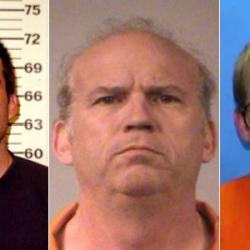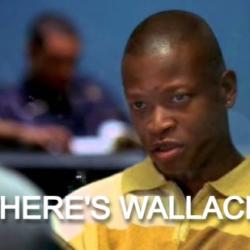George Ratliff's documentary Hell House is an extraordinary film. Here's the IMDB summary:
A look at the "Hell House" performed annually in October by the youth members of Trinity Church (Assemblies of God) in Cedar Hill, Texas (a Dallas suburb) — seen by over 10,000 visitors each year. We see the organization and planning of the event — including auditions, construction, scripting and rehearsals — largely through the involvement of one family: a single father with 4 children (one of whom suffers from cerebral palsy) including his daughter, a cast member.
The remarkable thing is Ratliff's detachment and lack of spin. He presents Trinity Church and its "Hell House" as they are and allows the members of the church to speak for themselves. The result is a film that I think the members of Trinity would find represents them accurately, but that most viewers will find appalling.
Inspired by the film, a group of comedians and actors in Hollywood are staging their own version of "Hell House" at the Steve Allen Theater. This is not a reverent production, but neither is it mockery — they are strictly adhering to the same script and production notes that were used at Trinity Church. The New York Times' Richard Rushfield reports:
Beginning Saturday night and running every Saturday night through Halloween, [Maggie] Rowe and her band of comedians, actors, special-effects artists and sound engineers — including [Sarah] Silverman, the comedian David Cross, the actor Richard Belzer, the television host Bill Maher and the former pornography actress Traci Lords — are taking over the Steve Allen Theater on Hollywood Boulevard and converting it, and the two-story office building around it, into a "Hell House."
Or a parody of one. An evangelical Christian take on walk-through haunted houses, Hell Houses replace ghosts and goblins with graphic depictions of young people surrendering to sin and then being tortured in hell for their transgressions. Audiences, led by a demonlike guide, witness scenes played out in unrelenting Grand Guignol fashion, depicting homosexuality, drunken driving and teenage suicide. According to a Hell House "outreach kit" compiled by Keenan Roberts, an Assembly of God minister in Broomfield, Colo., the scenes demonstrate: "The hell and destruction that Satan can bestow upon those who choose not to serve Jesus Christ. Literally, Hell House depicts choices that have the end result of ushering people into hell."
Rushfield is wrong to call this production a parody. Yes, it features Andy Richter as Jesus and Maher as Satan, but the only real differences between this production and the one at Trinity Church are the setting — a Hollywood theater — and the likely audience. Same event, same script, same words. Different perspective.
The production underscores what was most striking about Ratliff's documentary — that the same events can be perceived in directly opposite ways by different observers. Maher describes this well:
"I'm excited that they're doing the show just like they really do it. Where in many parts of the country it's greeted with reverence, here it will be greeted as it should be, with derision and laughter. Especially during this election season, when we are so divided.
"… The country is divided. People do think very differently, and this is a good example of exactly how differently people think."
(That captures what's so compelling and disturbing about Rick Perlstein's important article "The Church of Bush." "People do think very differently.")
It's impossible to understand America — or to understand why the election of 2004 looks to be so close — without understanding Hell House and the evangelical subculture that produced it.
Hell House arises, in part, from what I'm calling "evangelical anxiety" — about which much more later. I believe this anxiety helps to explain not just Hell House, but also things like the strange persecution complex of white evangelicals, the End Times mania of Tim LaHaye and Jerry Jenkins, abortion-centric politics, the gullible embrace of urban legends about Procter & Gamble and even the heartbreakingly sad insistence that "contemporary Christian music" is worth one's attention.
I'll get to all that in a bit, but for now I'll just share a sad, lonely example of evangelical anxiety described by Annie Dillard in Teaching a Stone to Talk (I've promised to lend the book to a friend and I won't be able to type this in later). Annie rings a doorbell to ask the homeowners for their permission to walk along Tinker Creek where it passes through their property:
The woman was very nervous. She was dark, pretty, hard, with the same trembling lashes as the boy. She wore a black dress and one brush roller in the front of her hair. She did not ask me in.
My explanation of myself confused her, but she gave permission. Yes, I could walk their property. … She did not let me go; she was worried about something else. She worked her hands. I waited on the other side of the screen door until she came out with it:
"Do you know the Lord as your personal savior?"
My heart went out to her. No wonder she had been so nervous. She must have to ask this of everyone, absolutely everyone, she meets. That is Christian witness. It makes sense, given its premises. I wanted to make her as happy as possible, reward her courage, and run.
She was stunned that I knew the Lord, and clearly uncertain whether we were referring to the same third party. But she had done her bit, bumped over the hump, and now she could relax.












